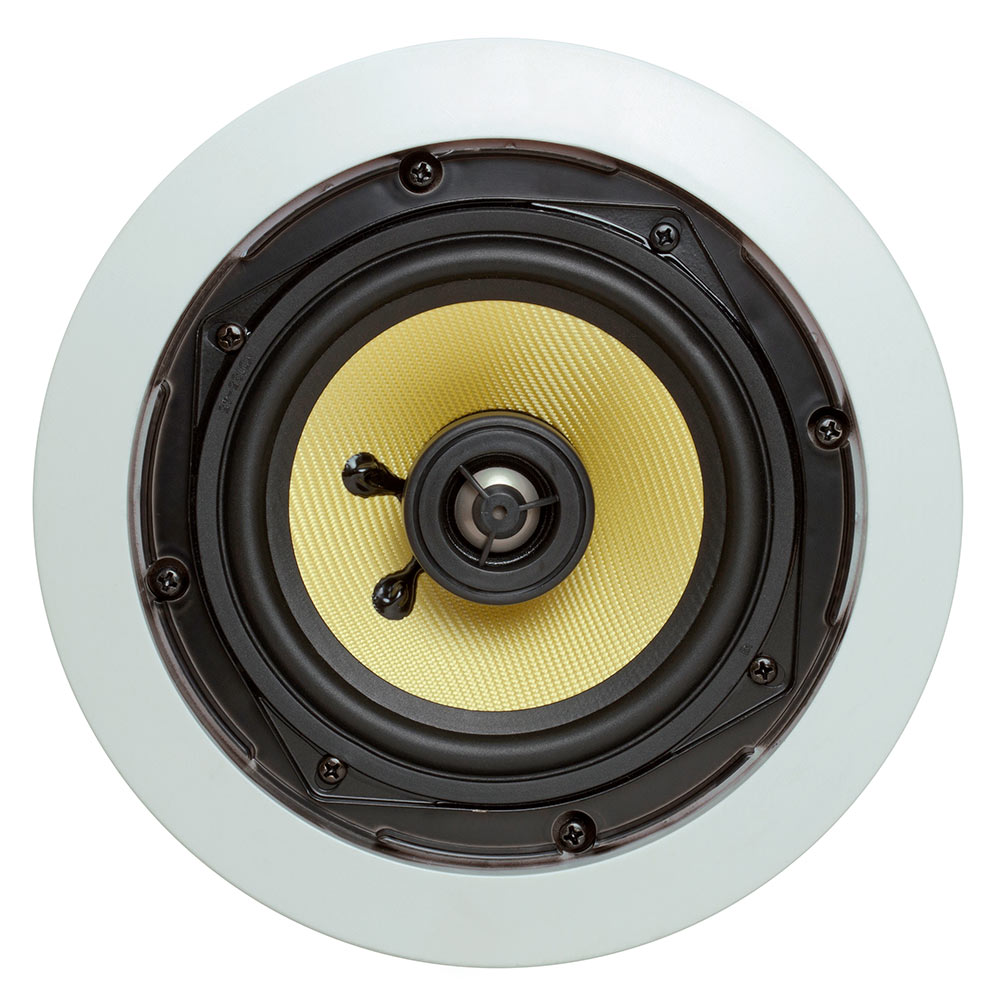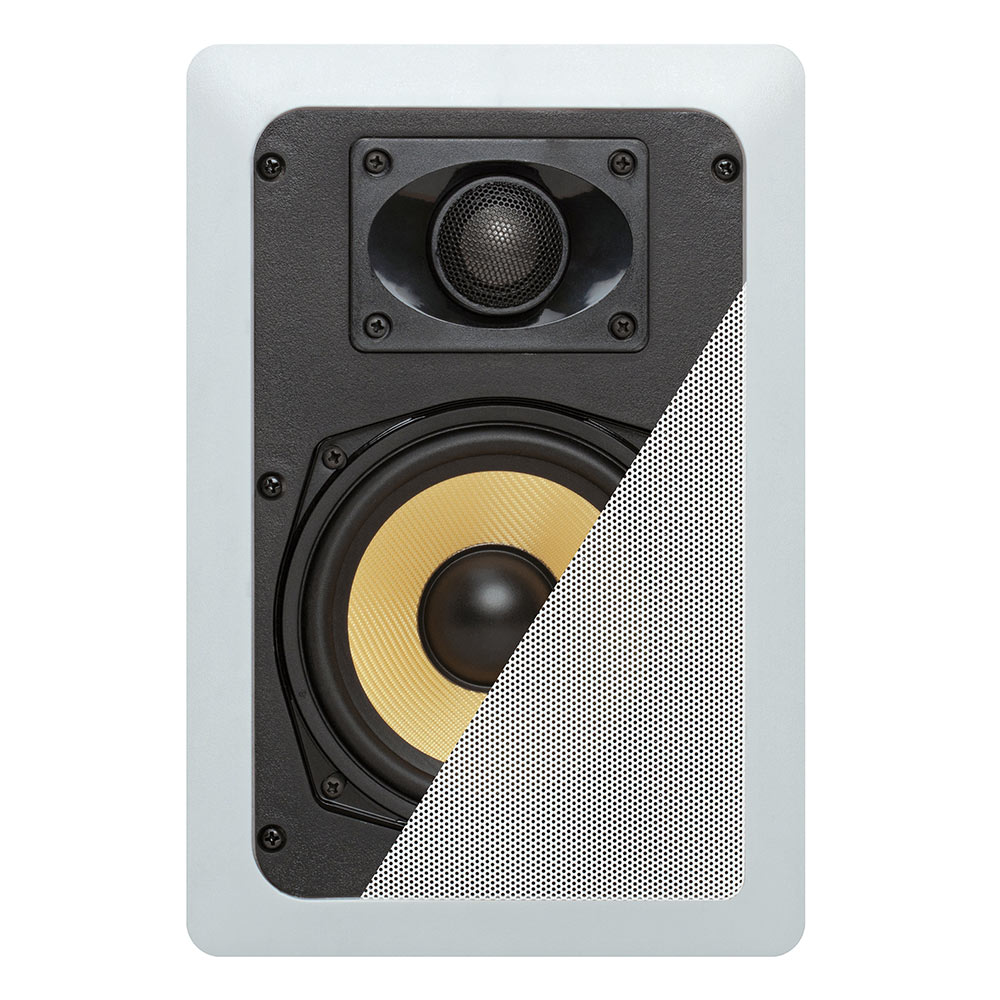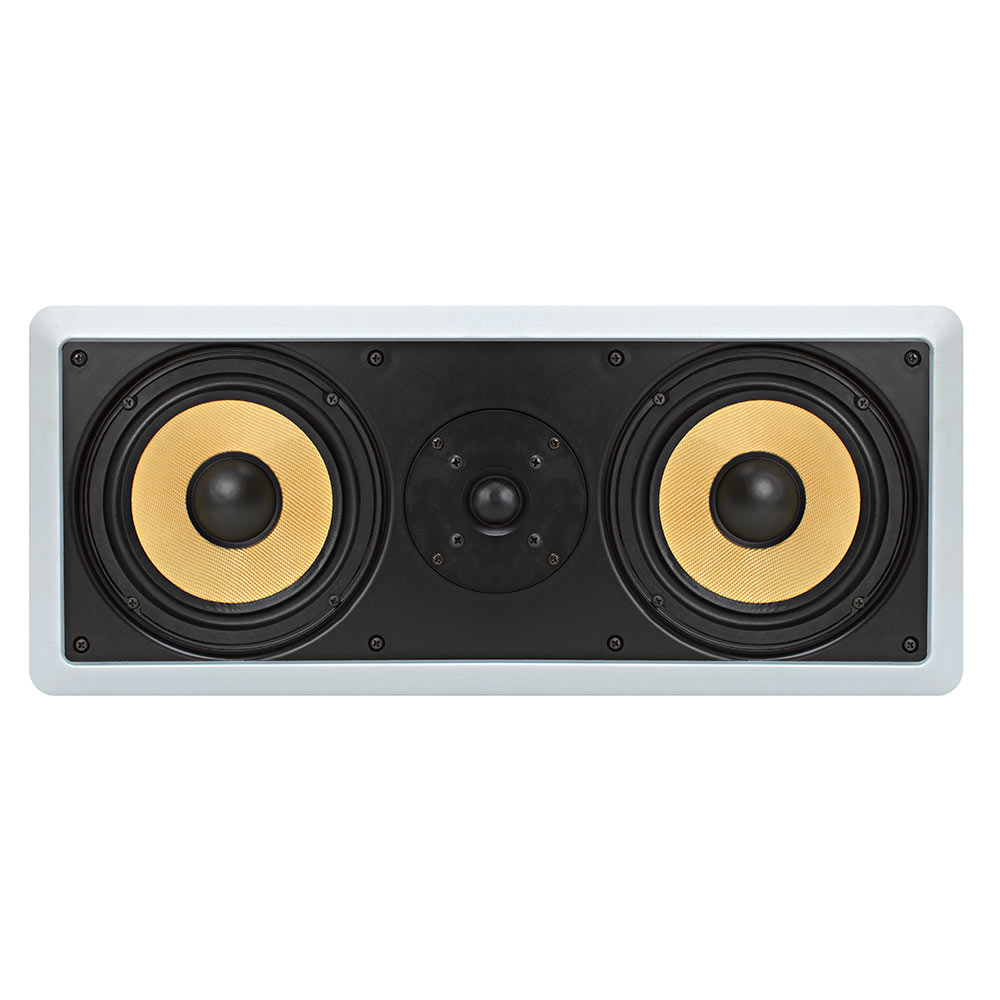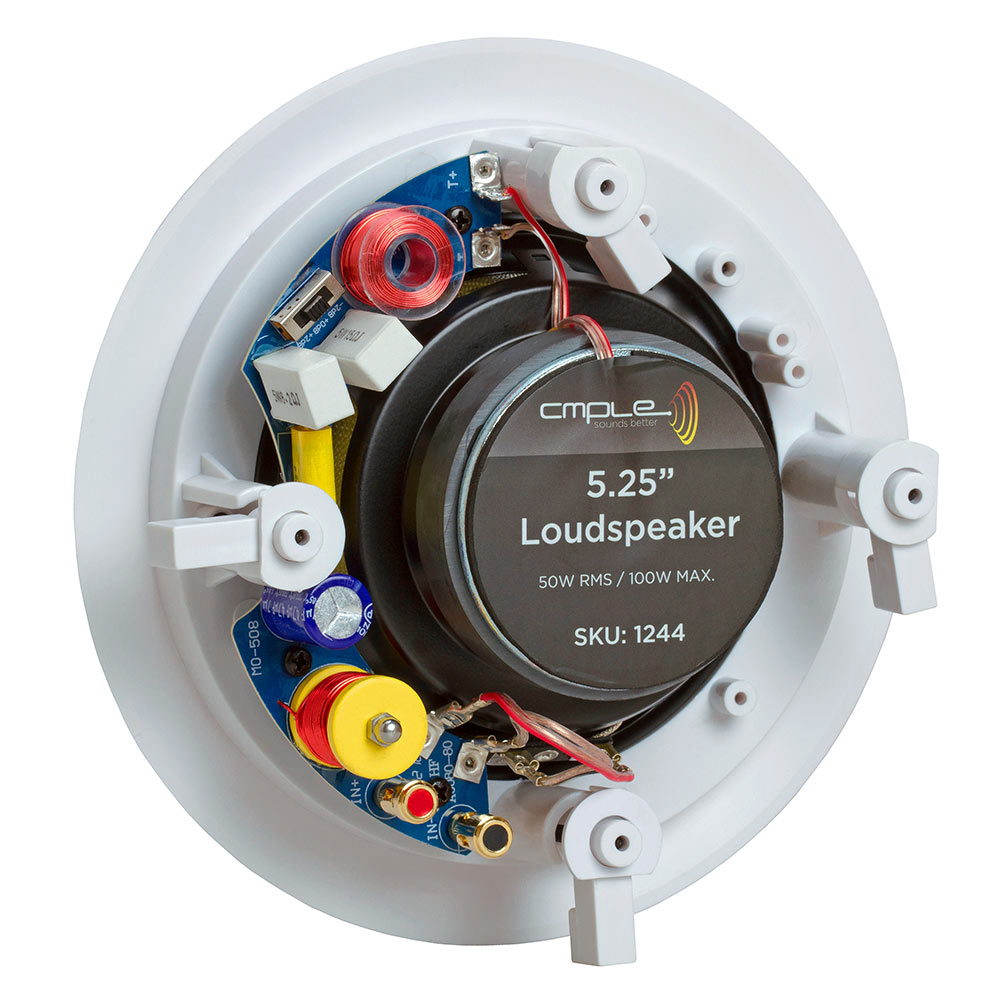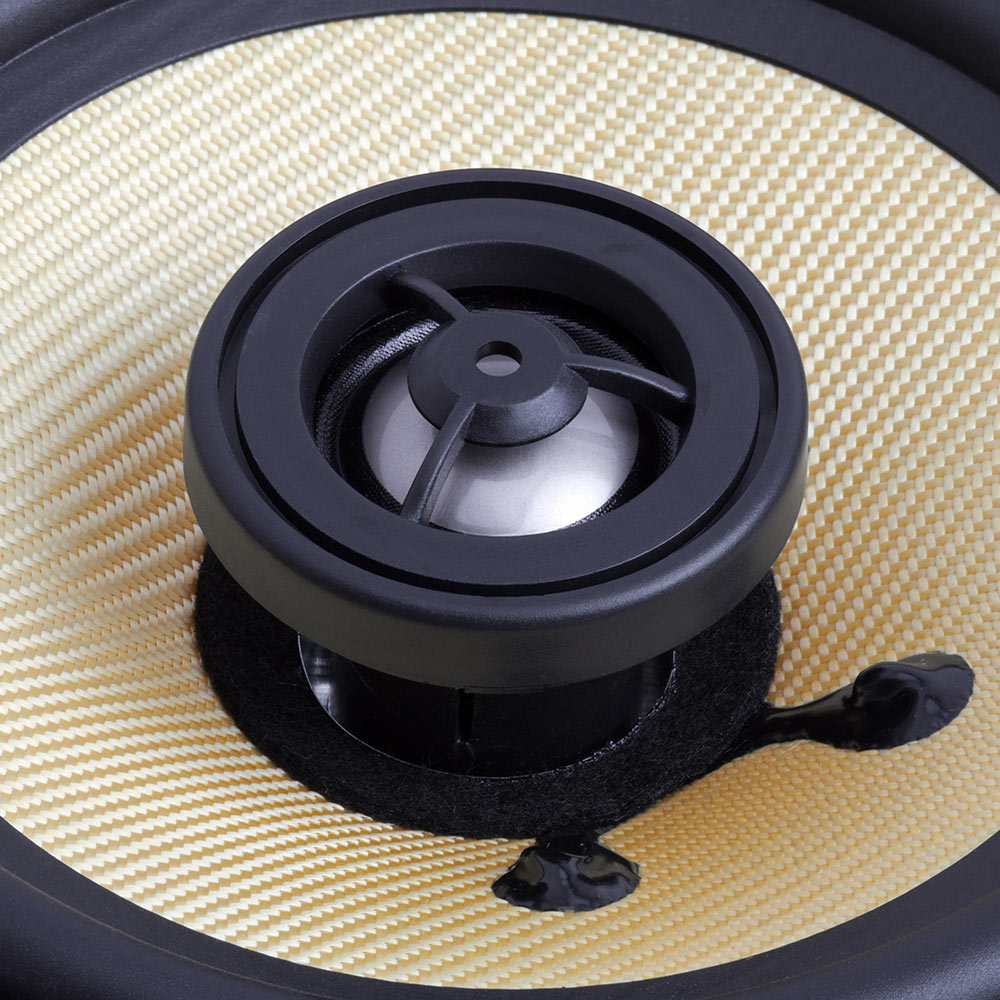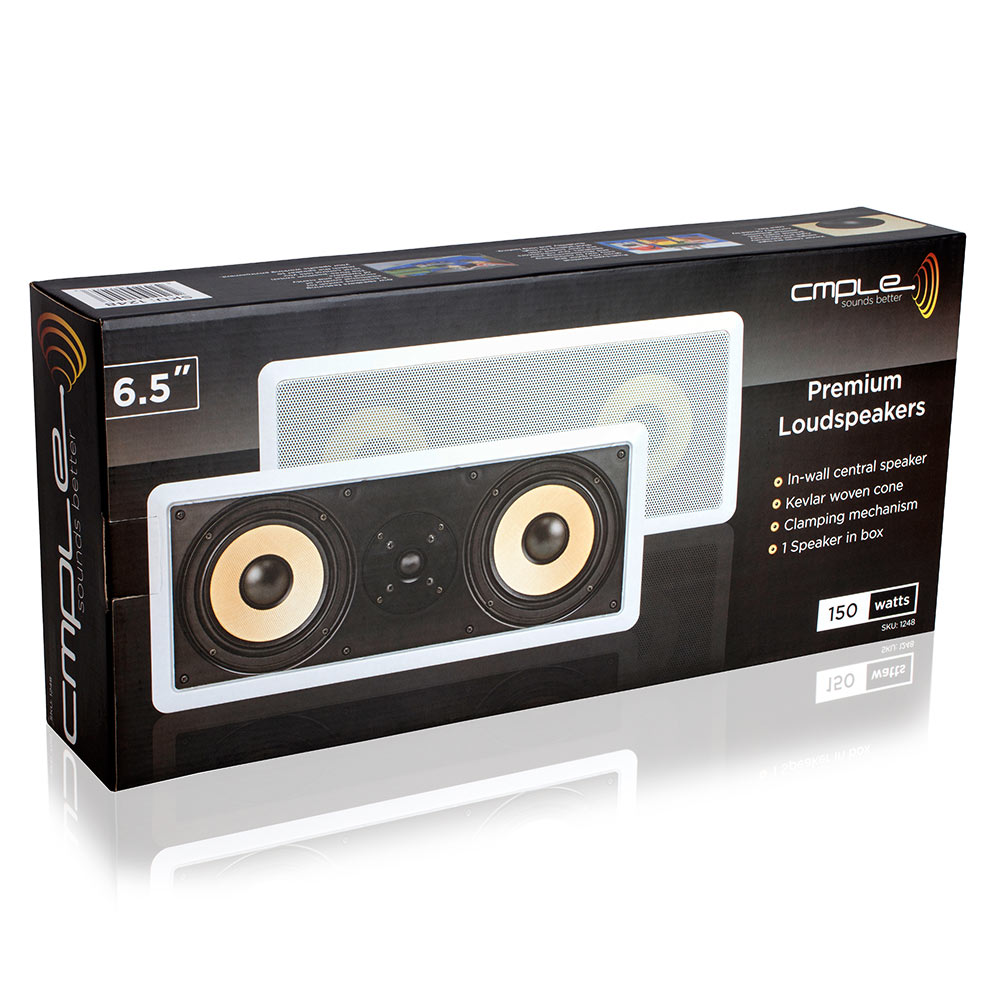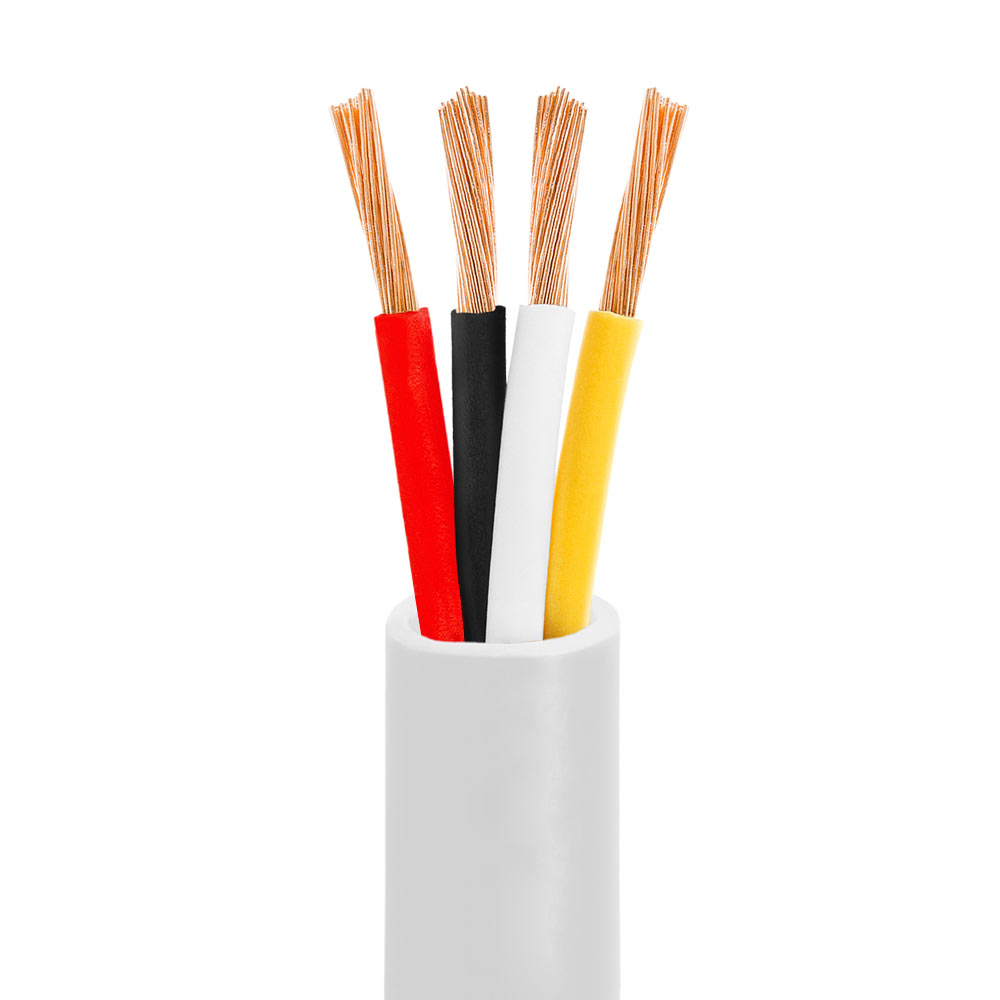Learn About In-Wall And In-Ceiling Speaker Positioning
Within minutes of settling into a friend’s home theater, you notice the incredible difference that in-wall and in-ceiling speakers can make in the overall audio experience. You resolve that you’re going to add those elements to your audio/video setup as soon as possible. You do your research and find the best in-wall/in-ceiling speakers for your setup.
Great. Now, where do you put them?
Don’t laugh; speaker placement isn’t a minor issue. The proper positioning of speakers is crucial for optimizing audio performance, especially when it comes to surround sound speakers permanently installed in walls or ceilings.
Thankfully, you don’t have to go through a lengthy trial and error session to find the best positions for your speakers. There are benchmarks and guidelines which can make the process relatively simple.
The first step is to assess your needs and determine exactly what speakers your system can best support.
Home or Commercial?
We assume most people reading this article are interested in installing speakers for their home theater or A/V system. However, if you’re thinking about in-ceiling speakers for commercial uses like background music in a store or business, the advice which follows doesn’t apply. There are different considerations for most commercial applications.
The reason audio is muddy or barely-audible in most businesses is that they’ve installed inexpensive speakers to cut costs, and you’re not going to get good sound without higher-quality, flush-mounted enclosure in-ceiling speakers. You can add extra woofers for better bass and louder sound, but simply using larger speaker enclosures will work decently in most locations. The types of speakers and their locations should be chosen based on whether you want the sound spread evenly in a large area (in which case the same style of speaker should be placed at equal distances throughout the space) or want to target specific areas (in which case the tips that follow may be somewhat helpful).
Since most commercial spaces are shaped quite differently, there’s really no one-size-fits-all prescription for speaker installation. Consulting an acoustics expert would be a good idea.
Home Theater Installations
Those who considering in-ceiling or in-wall speaker installation for their A/V system probably know enough about home theater to understand the terms 5.1 and 7.1; they’re the most common configurations of home theater surround sound systems. The first number refers to the number of speakers being used, and the second number refers to the number of subwoofers.
Knowing your system’s specs is important because speaker configurations differ according to the number of speakers being used – and the equipment in your system will determine whether you’ll be able to install five speakers, seven speakers or some other number (there’s now also 9.1 and 11.1 surround sound, among other options). It also matters whether your system supports advanced Dolby TrueHD or DTS-HD Master Audio formats, in which case you should consult your documentation for suggested speaker placement suggestions. Finally, you should figure out where your preferred listening spot in the room will be. We’ll pause for a moment, while you figure out the answers to those questions.
All set? Let’s go through the most-common possibilities.
Surround Sound In-Wall Speaker Placement
One note before we start: when we use phrases like “at ear level” in the following sections, we’ll assume that you’ve determined the preferred listening spot we mentioned a moment ago.
When all speakers are being installed inside walls, the left and right front speakers should be placed at (or just above) ear level on either side of the monitor. They should be close to the screen, no more than a couple of feet away, so it seems the sound is coming from the display. The left/right front speakers should be at an equal distance from each other and your listening spot, ideally forming an equilateral triangle between you and the two speakers. The center speaker should be then installed below the monitor; if you put it above your TV, the audio will shoot over your head and go largely unheard.
The surround sound speakers, whether you’re using a 5.1 or 7.1 system, should be installed slightly higher on the wall than the front speakers, so that the supplemental audio tracks don’t fight with the stereo sound. Stand up at your preferred listening spot, and “standing ear level” will be about the right height for in-wall surround speakers. For 5.1 or 7.1 audio, two surround speakers should be placed to the left and right of your listening spot, slightly behind where you’ll be sitting. In a 7.1 system the two additional speakers go into the back wall, at the same height as speakers #4 and #5 and with about half as much space between them as there is between the two front stereo speakers.
Surround Sound In-Ceiling Speaker Placement
Front in-ceiling speakers aren’t the best choice for a home theater because they lessen the impact of sound “coming from the screen.” If you’re going that route, though, be sure to install all the speakers 2-3 feet away from the wall in order to avoid excess reflected sound. You should use the same distance recommendations for the left and right front speakers as discussed above – but measure all distances to ear-level on the wall, not all the way up to the actual ceiling speaker locations. The center speaker goes right above the monitor, equidistant from the two stereo speakers. Be sure to aim all tweeters at ear level, if possible.
In-ceiling speakers #4 and #5 for 5.1 systems should be to the right and left of your listening position, separated from each other by the same distance as your two stereo front speakers. For 7.1 systems, the four surround speakers should be placed at equal distances in a slight arc behind the listening position. There should still be the same distance between the two outside rear speakers as there is between the two front speakers.
Choosing and Installing In-Wall and In-Ceiling Speakers
The best way to get a feel for the types of speakers which work best for in-wall and in-ceiling installation is to check out Cmple’s selection of 2-way surround sound speakers. They are available in round and rectangular sizes, with Kevlar or IMPP cone woofers, and titanium, Mylar or silk dome adjustable tweeters. They are all engineered for outstanding sound reproduction, at extremely reasonable prices.
We also carry a full range of high-quality in-wall and in-ceiling-rated speaker wires, available in bulk lengths from 50 to 500 feet, plus all of the tools you’ll need for an easy and professional installation.
In-wall or in-ceiling speakers can add a professional look and feel to your home theater. Just be sure that they’re positioned properly – and that you remember the old adage “measure twice, cut once” before installation – and you’ll be happy with yours for many years.




